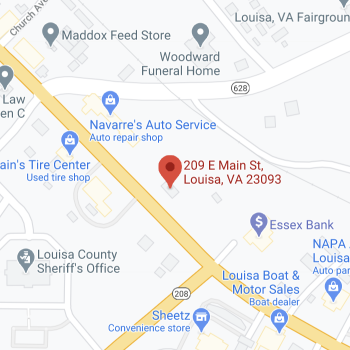Bethel Builders is your new home builder for Fluvanna County, Virginia.
The area which is now Fluvanna County was once part of Henrico County, one of the original shires of the Virginia Colony. Henrico was divided in 1727 and the Fluvanna County area became a part of Goochland County. In 1744 Goochland was divided and the area presently known as Fluvanna became a part of Albemarle County. Finally, in 1777, Albemarle County was divided and Fluvanna County established.
The County was named for the Fluvanna River, the name given to James River west of Columbia. Fluvanna means “Annie’s River” in honor of Queen Anne of England. Located in the Piedmont above the fall line, the county has the James and Rivanna rivers running through it.
The Point of Fork (near Columbia where the James and Rivanna rivers meet) was the site of a major Monacan village of the Native Americans in pre-colonial times. In the late eighteenth century, Thomas Jefferson improved the navigability of the Rivanna River, as he owned much property along its upper course, e.g. Shadwell and Monticello plantations. Improvements included in the first generation (through 1830) were sluice cuts, small dams and batteaux locks.
Second generation (1840–1870) improvements made by others included construction of long stretches of canal, serviced by large locks, many of which are still visible along the river. Shortly after the completion of the initial Rivanna navigational works, Virginia requested that the river be opened to public usage. Jefferson reportedly initially refused, but the state insisted and the Rivanna became an integral part of the central Virginian transportation network. The route serviced a large community of farmsteads, plantations throughout Albemarle and Fluvanna counties. It also was lined by increasing numbers of industrial facilities, such as those at Union Mills. Construction of the larger mills prompted the great improvements to navigation. For instance, Union Mills featured a two-and-a-half-mile long canal and towpath, and one upper and two massive lower locks, all directly upon the river.
Where the Rivanna meets the James River at Columbia, the Rivanna Connexion Canal merged with a much longer canal. (The series of locks which connected the two canals lie just outside of the Town of Columbia and are mostly buried by sediment today). In 1840, the James River and Kanawha Canal was constructed adjacent to the north bank of the James River and opened to traffic. The new canal was part of a planned link between the Chesapeake Bay and the Atlantic Ocean via the James and the Kanawha rivers; it was intended to connect via the Ohio River, to the Mississippi River and the Gulf of Mexico. The canal was used by packet and freight boats, which replaced the earlier shallow-draftbatteau for commerce. These boats brought goods and passengers to and from Richmond and points beyond. Long a dream of early Virginians such as George Washington, who was a surveyor early in his career, the canal was never completed as envisioned.
source: Wikipedia









